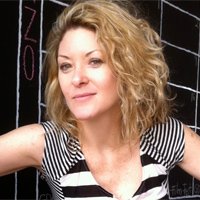BYOD: Bring Your Own Doc
Episode 177
SPANISH LAKE, Documentary on Race, Class and White Flight with Filmmakers
Coming on the heels of the racial tensions in Ferguson, Missouri following the shooting death of Michael Brown, the director of a new documentary about race, class and white flight in a nearby community discusses the making of ‘Spanish Lake.’
The bold and uncompromising documentary – directed by Philip Andrew Morton and produced by Matt Smith - focuses on economic oppression in the suburb of Spanish Lake, Missouri, which is located just eight miles from Ferguson.
The film reveals how a lack of local government and community leadership has disastrous effects on the community, including a mass exodus of the white population in the late 1990’s.
The themes of the film parallel America’s growing political divide, underlying racism, and a rise in anti-government sentiment.
Things started to change in Spanish Lake in the mid ‘90s when the town took a definite turn. On one hand, you had the government not knowing what to do with the poor, and eventually wanting to move them out of high-rise buildings in the city and into suburban areas.
And on the other hand, real estate companies began seizing on the situation as a great economic opportunity.
“My family left in 1997, and this was at the height of the white flight that was going on. And I didn’t come back until 2007 - 10 years later,” Morton said. “When I came back to visit, the first house I lived in was abandoned, as was half the block, as was my school, as was my church. And it was probably one of the worst days of my life. – it was emotionally devastating on every level.”
He said that out of this visit came the idea for the film. “In order to make peace with it I started to investigate white flight in general, just as a process and all the different dynamics that went into it, and then I just decided to make this as a documentary.”
The film was actually banned in St. Louis by major theater chains because it was worried about protests and possible rioting if the film was shown.
But Smith maintains the film remains balanced. “I think we were really conscious of the fact that we were trying to give a balanced voice to both the African American community and the Caucasian community, because both had sort of lived the same experience in their own ways. So we took the time to let them both have that voice.”
Morton explains that a Section 8 voucher system – which usually pays for about 70 percent of the rent – had an impact on poor people who couldn’t afford normal housing rates. But he added that this became tricky because the system was based on fair market rates.
“So they’re kind of forced to live where it’s cheapest to live. So really you just have a ghetto – it’s moving the ghetto from the city to the suburbs.”
The film points out that a lot of the people in Spanish Lake didn’t want to leave, but the violence and living conditions basically forced them out.
“The early people that left did have an incentive to leave,” Morton said. “Some real estate agents would tell them if you leave now you’ll get everything for your house. But then some of them – the longer they stayed – the more that they would deck them in terms of their selling price. “
He said there was often a mark up by real estate agents after white residents decided to leave, but they weren’t usually aware of this markup.
“It’s happening everywhere, every major city has had this issue happen,” Smith said about the themes in the film. “I mean, we used Spanish Lake as a microcosm for a much larger problem across the nation. It really opened my eyes going to a community like that, where you can see the segregation on eye level.”
Speaking about the ban on the film in Missouri and some other areas, Smith said he was working to get it back into theaters across the U.S.
“It feels good,” Morton said. “I’ve always wanted a banned film. It’s a filmmakers dream, so thank you, thank you.”

Comments